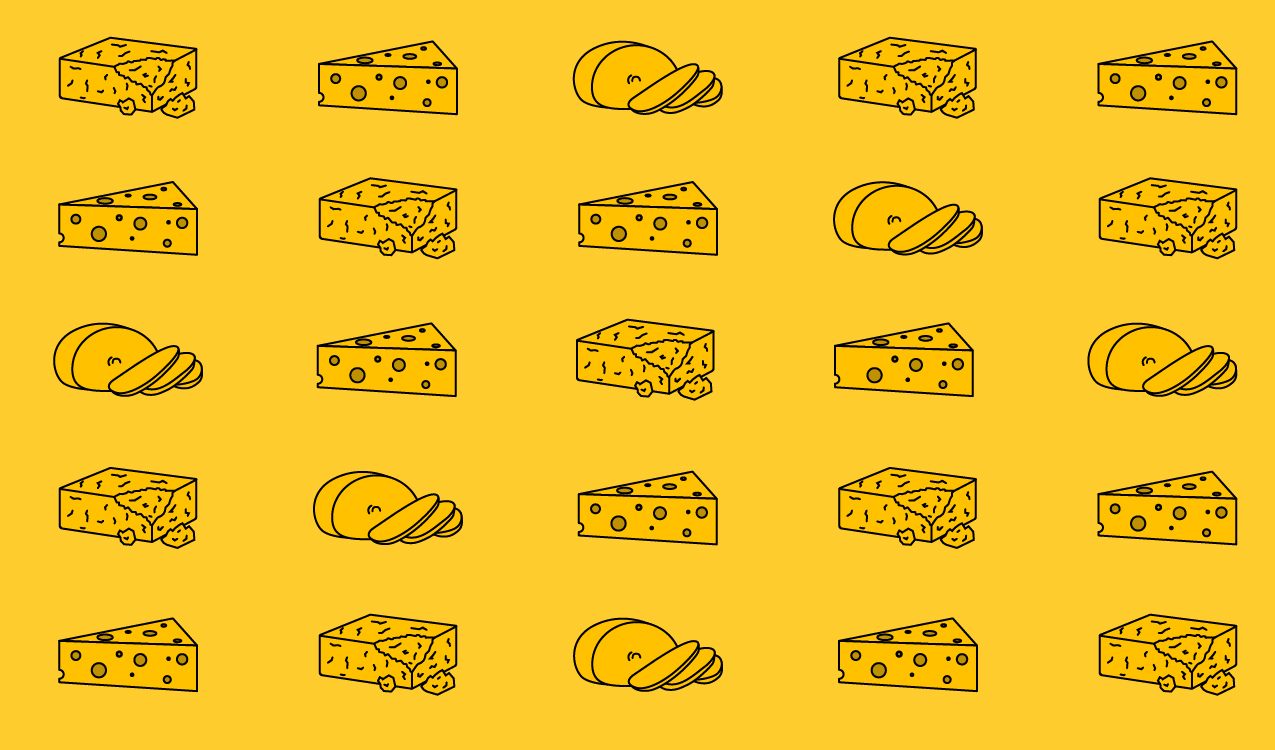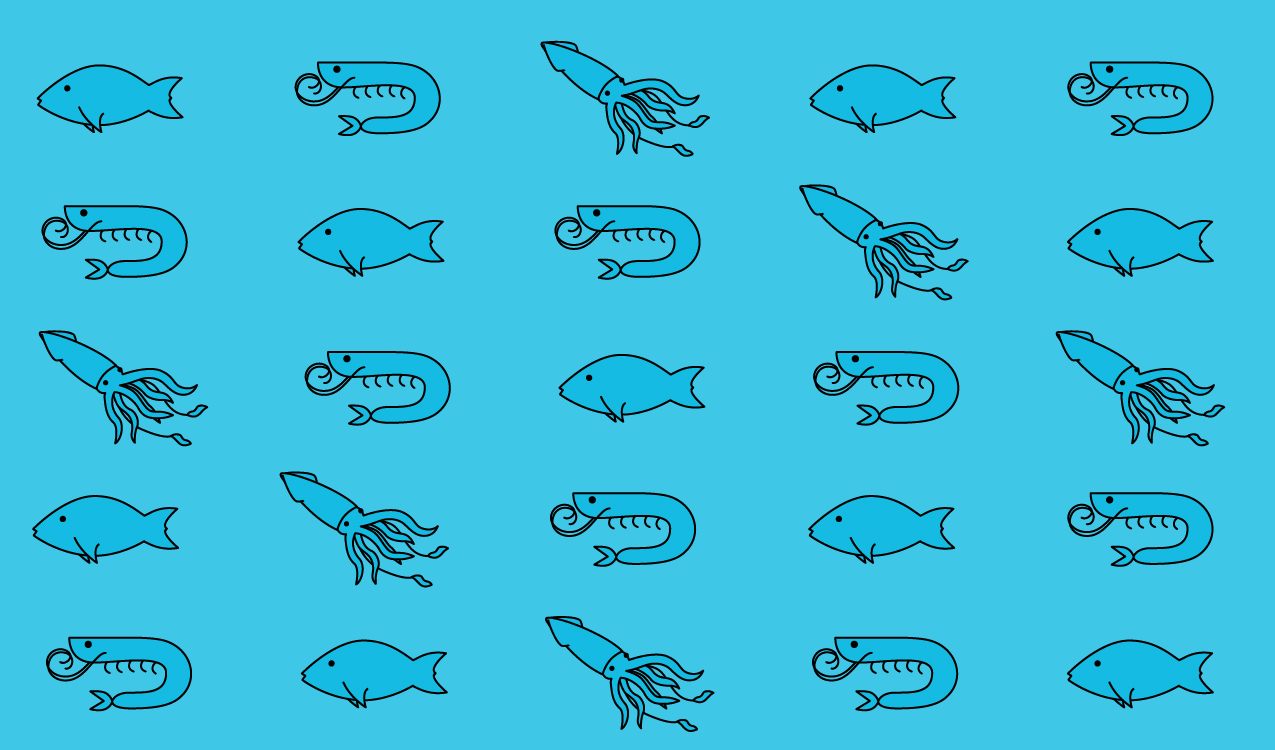Where Did the Prohibition on Combining Seafood and Cheese Come From?
Fish and dairy can make for a delicious mix, despite popular belief.
In a recent episode of Top Chef, a team of contestants puts forth a dish featuring lightly smoked trout and a grated hard, salty cheese. The reaction from the judges is as predictable as it is—to me, at least—completely confounding. “Considering I really hate any mixture of seafood and cheese, I didn’t mind this dish,” says judge Padma Lakshmi. Nodding vigorously, head judge Tom Colicchio says, “I’m with you.”
On a show where experimentation is often rewarded, where the judges delight in being presented with combinations of ingredients that don’t seem as if they’d work, there is a moment on almost every season when a contestant attempts to combine seafood and cheese. This season’s grudging non-hatred is about as high a praise as such a dish has ever gotten.
The prohibition on combining seafood and cheese is ancient and strong, but localized. The Top Chef judges state this prohibition as if it is a universal rule, but of course there are dozens of centuries-old dishes combining seafood and cheese that are beloved outside the United States—in Greece, Mexico, France, and even in specific pockets of the U.S. itself. To assume that the combination of seafood and cheese is inherently wrong is bizarre, and yet common. So where did it come from?

“It definitely originated in Italy, there’s no doubt about that,” says Julia della Croce, a cookbook author, teacher, writer, and one of America’s foremost experts on Italian cuisine. “Italians are very religious about mixing cheese and fish or seafood, it just isn’t done.” I spoke with several food historians and nobody seems to disagree on this point: The prohibition, and its aggressiveness, come from Italy.
Internationally, there are many, many examples of dishes combining seafood and cheese, some of which are significantly older than the nation of Italy. There’s garides saganaki, a Grecian dish of broiled shrimp, tomatoes, and feta. There’s moules au Roquefort, mussels in white wine with a strong blue cheese, from France. Fish tacos and quesadillas throughout the beach towns of Mexico are often served with melted chihuahua cheese. There’s the classic bagel with cream cheese and lox from New York, or the legendary white clam pizza with pecorino romano from New Haven, Connecticut.
Exactly why the prohibition exists in Italy, what the reasoning is, that’s less clear. A common explanation is that seafood is very delicate and cheese very strong, and that cheese can overpower the flavor of seafood. This is, of course, ridiculous: plenty of seafood items, like clams, mackerel, oysters, and sardines, are very strong in flavor, and plenty of cheeses, like ricotta, mozzarella, queso fresco, and paneer, are very mild.

Della Croce says that the Italian objection to seafood and cheese is more based on preference. “The reason it isn’t done is, as the Italians will say if you ask them, they’ll just tell you that it really muddles the flavor of seafood,” she says. “Seafood is just not meant to be served with cheese, the flavors just don’t work together.”
The sweeping, confident belief that cheese overpowers seafood, or that there’s something inherently disqualifying about the combination, is flat-out wrong. The prohibition comes from somewhere else; there must be a reason beyond simple taste preference. After all, I don’t love the combination of orange and chocolate, but I don’t walk around telling anyone eating one of those fun chocolate spheres that breaks into clementine-patterned slices that combining chocolate and orange must not be done.
Before I get into this section, there’s some stuff to clear up. Italian cuisine is not monolithic, and regional Italian cooking carries clear influences from whatever other country is nearby or once conquered it—Austria, France, Tunisia, for example. And della Croce notes that in the past decade or so, younger chefs in Italy have shown more willingness to experiment with what previously had been a fiercely defended cuisine.
Della Croce, like many food writers, used the word “traditional” to describe certain dishes and ways of eating. I find this a very tricky concept to nail down; tomatoes, for example, are not native to Italy, and many of the best-known Italian dishes (as with all cuisines) are clearly products of cultural interchange. To declare something “traditional” suggests that it is static and unchanging, when of course it must have changed many times before becoming what it is.
In order to create something that can be referred to as “traditional,” a large group of people must decide all at once to dig in their heels and defend against any changes. It naturally follows that there must be some kind of large event to trigger this; otherwise why would everyone simultaneously decide that the way their grandmother made polpetti is the only way?
This conception of “traditional” food is not one that everyone shares; I get the sense that della Croce thought I was being sort of extremist in insisting that all cuisine is fluid chaos, a snowglobe in the grip of a manic six-year-old. But she did note that one of these large events did happen recently: World War II. “Italy changed enormously after World War II, so people became very protective of their local traditions, because they were eroding away,” she says. “The war ruined Italy. Everything became modernized and Americanized.”
After a globe-shaking event like a world war, and with globalization threatening to change a weakened country with fierce regional and national pride, it is wholly reasonable that Italians would want or need to hang onto traditions. All of a sudden, everything was uncertain. Who even are we? How do we maintain our identity?

Food is Italy’s greatest cultural export. Easily. Everyone freakin’ loves Italian food. But with increased globalization comes a struggle. Italian food, like widely dispersed cuisines from China and Mexico, would be changed upon landing on other shores. And change, at that time, was something that scared the hell out of Italy, because it seemed inevitable and oppressive and overwhelming. So—and this is obviously a generalization, but one that the data backs up—Italians locked in on what they grew up with. The way their grandmothers did it, that was the only way to do it. Any other way was wrong, and to do it wrong was potentially disastrous.
The food thought of as “traditional” Italian food is often, though of course not entirely, from the late 19th century. Pizza margherita, bolognese, risotto, osso buco (in its current form), and many more, can be dated to that era, and no earlier. These were the dishes of the grandmothers of those who survived World War II. They became tradition, even though they are not, objectively speaking, all that old; there are many cookbooks and written descriptions of Italian food from the 18th century and earlier, and they do not mention these dishes. Instead they were the green bean casserole of their time, albeit much tastier.
Another element: Italy has always had fierce regional pride. The country itself has only been unified since 1861, and had prior to that been an area of competitive and sometimes hostile individual nations and city-states. “God forbid you should ask a taxi driver the way to make a Roman dish,” laughs della Croce. “It’s only done this way, in Rome we do it this way and in Naples, forget it, they don’t know how to do it.” That regional competitiveness still exists, but there’s also a bigger competition: Italy versus the world.
It’s worth mentioning here that pretty much everyone can get touchy about the right way to prepare and eat their food. But usually the things people get touchy about are specific dishes, not basic rules like the combination of two widely eaten categories (at least in the West). Me getting irrationally angry about a cinnamon-raisin bagel is not the same thing as an Italian person saying that seafood and cheese should never be combined.

The prohibition against combining seafood and cheese was one of the things 1940s Italian grandmothers said, which, I think, got caught up in Italian panic and pride and competitiveness and all that other stuff. It became a fundamental part of Italian cuisine. And because Italian cuisine is, along with French, such a dominant force on American cuisine, some of those traditions made it over the Atlantic. An American chef who has trained in Italy, or under an Italian instructor, might subsume some of these rules. The authentic, traditional way to serve seafood in Italy? Never with cheese.
So I think that’s why the prohibition is powerful in both Italy and the U.S. But it doesn’t really explain where it came from. One historian I spoke to suggested that the great cheese-making areas of Italy were usually inland, and so cheese and seafood would not normally have been combined just due to geographic separation. This is sort of true; much of Italy’s best cheese comes from mountainous inland areas. But cheese is made throughout Italy, and some of the most famous cheeses—mozzarella di bufala, pecorino romano—come from provinces with substantial coastlines.
Ken Albala, a food historian and professor at the University of the Pacific, suggested something else: This was originally a medical prohibition. From the time of Hippocrates, in the fourth and third centuries B.C., humorism was the dominant medical theory throughout what is now Italy. The theory relies on balancing of the four humors (humors in this case meaning bodily fluids): black bile, yellow bile, phlegm, and blood. Good health was considered to be a result of proper balancing of the humors. One thing that could throw the humors out of whack, or be used to re-balance them, was food, and types of food were considered to have different effects on the humors.
“Cheese digests very slowly and would hamper the transformation of the fish, which very easily corrupts,” writes Albala in an email. “That is, it would go bad long before it could be fully broken down. And then that corrupt fish would be forced into the liver, be transformed into corrupt blood and ruin the entire digestive process.” Some of this can be traced back to actual health concerns in the same way the Jewish rules of Kashrut (or Kosher) can be: fish certainly can spoil, and many people are lactose intolerant. Ancient physicians and philosophers, including Aristotle and Galen, warned of the combination. “By the late middle ages and Renaissance it’s common wisdom in the dietary literature,” writes Albala. “Still ingrained in most Italian people’s minds as unthinkable.”
This one makes the most sense to me: a strange ancient tradition, the actual meaning of which was lost centuries ago, caught up in a tide of preservation following a war, and simultaneously exported via chefs and foodies eager to show familiarity with tradition. It’s crazy, but then, so is proclaiming that shrimp and feta don’t taste good together. (They really do.)
Gastro Obscura covers the world’s most wondrous food and drink.
Sign up for our regular newsletter.































Follow us on Twitter to get the latest on the world's hidden wonders.
Like us on Facebook to get the latest on the world's hidden wonders.
Follow us on Twitter Like us on Facebook